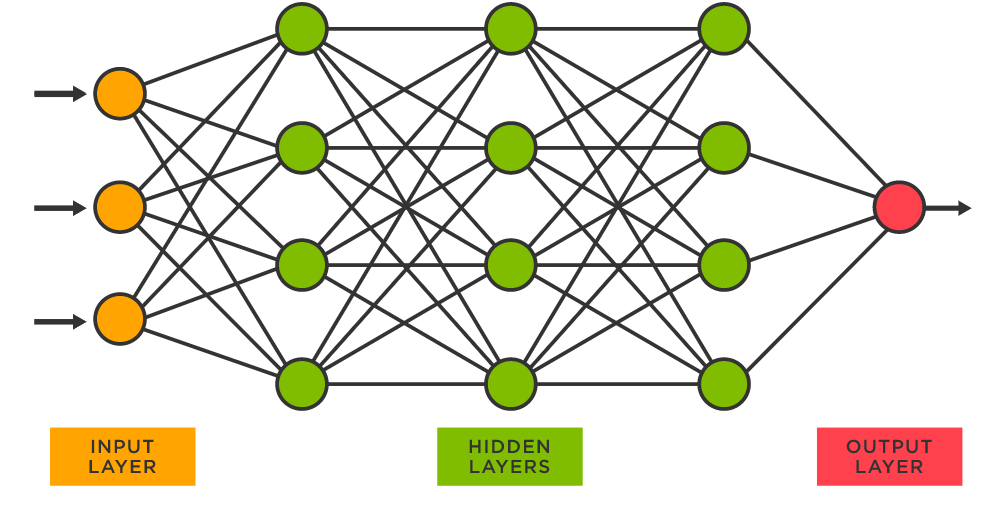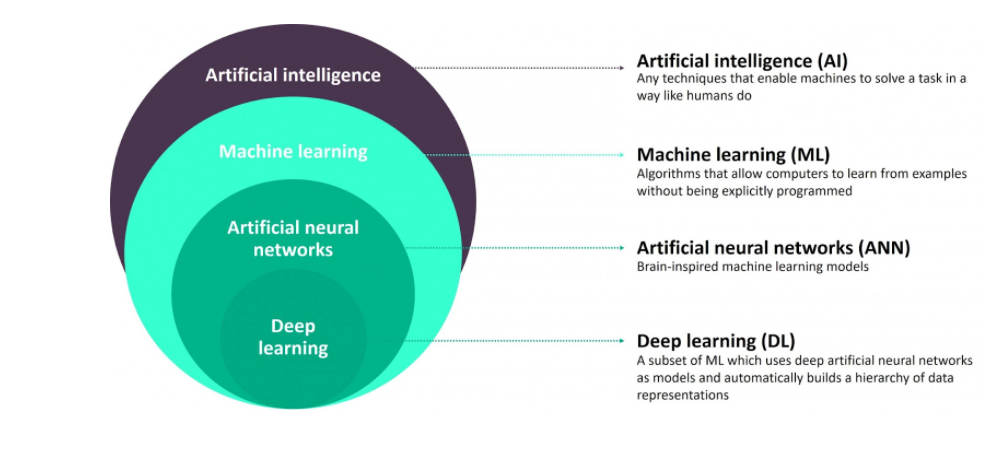Artificial Neural Networks:
-
Artificial neural networks (ANNs), also called neural networks (NNs), are computing systems inspired by the biological neural networks that constitute animal brains. It is based on a collection of connected units or nodes called artificial neurons.
-
The concept behind an Artificial Neural Network is to define inputs and outputs, feed pieces of inputs to computer programs that function as artificial neurons and make inferences or calculations, then forward those results to another layer of computer programs and so on, until a result is obtained.

Backpropagation:
-
As part of artificial neural networks, a difference between intended output and input is computed at each layer and this difference is used to tune the parameters to each program. This method is called backpropagation and is an essential component to the Neural Network.
Potential/applications of ANN:
-
The ANN frameworks can be used for both normal Machine Learning tasks like classification or clustering and for Deep Learning.
-
Through ANNs and the backpropagation method, artificial intelligence has become more powerful. This can enable a computer to perform tasks like a human brain does.
-
ANN frameworks will be useful where there are tasks that cannot be done with good accuracy by normal Machine Learning and hence need Deep Learning in tasks such as Automatic Image Recognition of rich images and Speech Recognition.
-
A special type of ANN called Generative Adversarial Network can actually generate creative output like music or paintings.
-
ANNs are also present in many smartphone applications, like voice to type, Siri and Alexa.

Limitations of ANN:
-
Time taking process to train networks.
-
High computational power needed to train networks.
Developments aiding the development of ANNs:
-
The advent of Graphic Processing Units (GPU) which are good at performing massive parallel tasks have helped improve computing power.
-
Availability of a few free ANN frameworks that can be used for both normal Machine Learning tasks as well as Deep Learning tasks.
-
The advent of cloud computing has provided enormous computing resources that are needed for ANNs to “work through” massive volumes of data.
-
The software for neural networks have matured and backpropagation techniques have become robust.